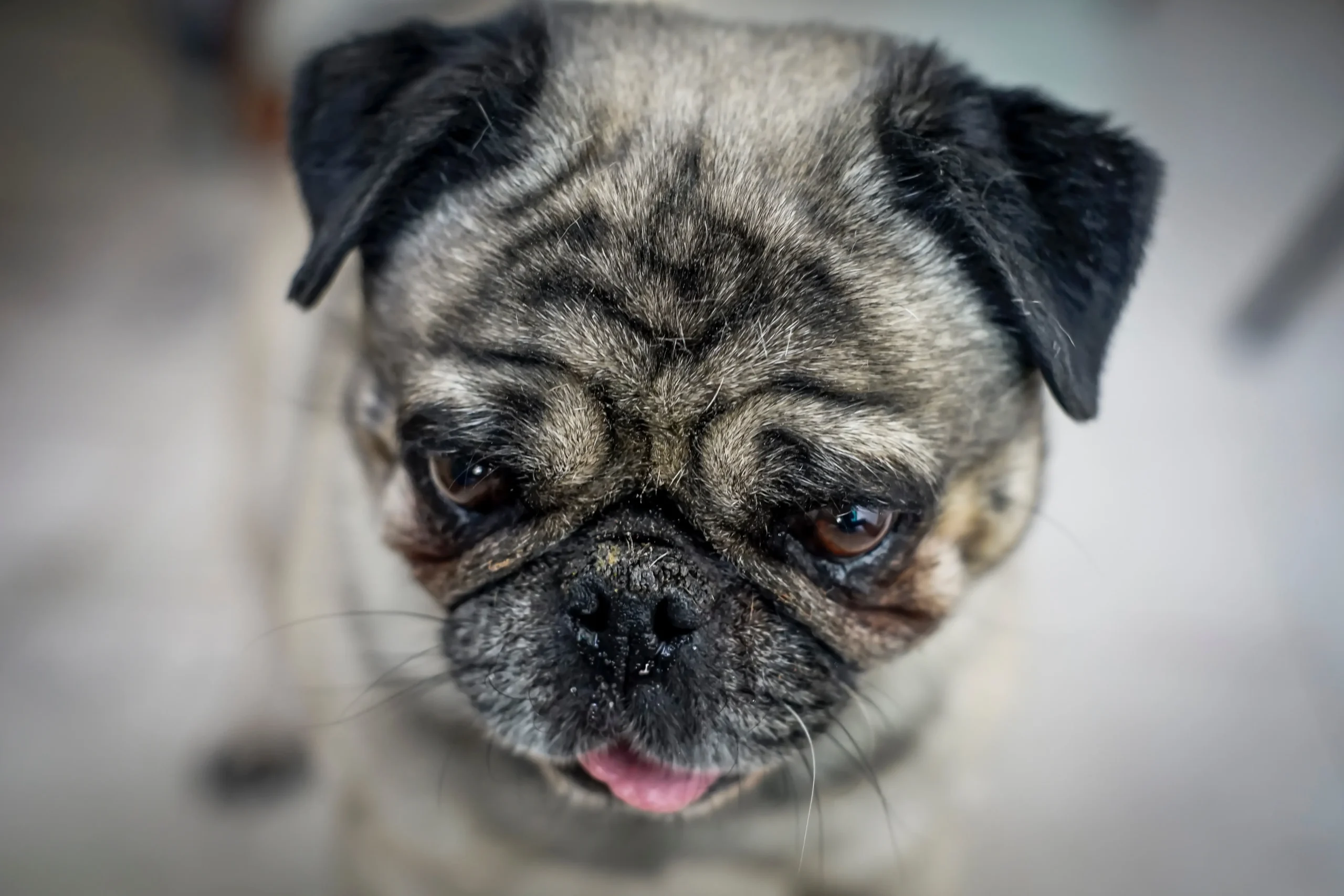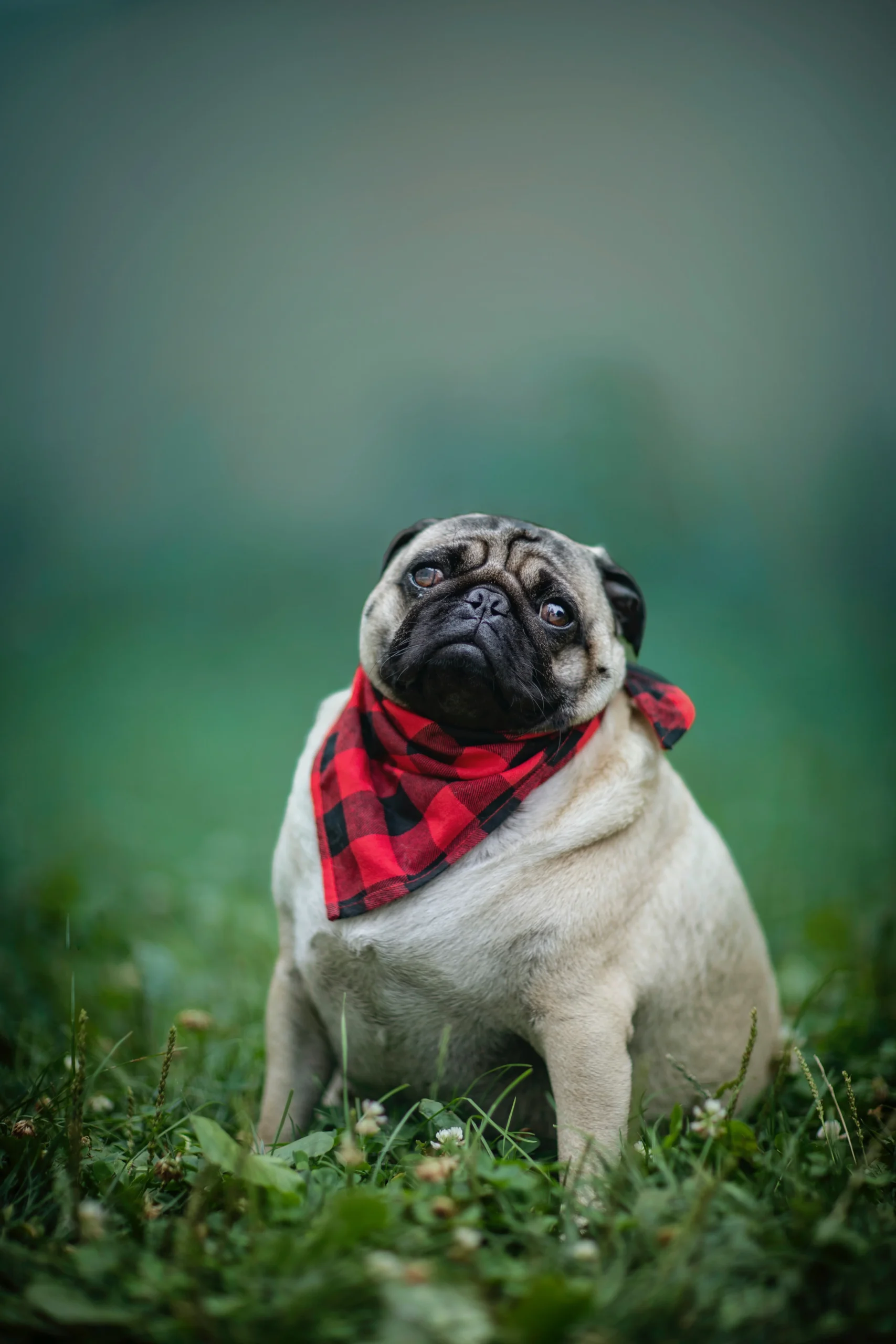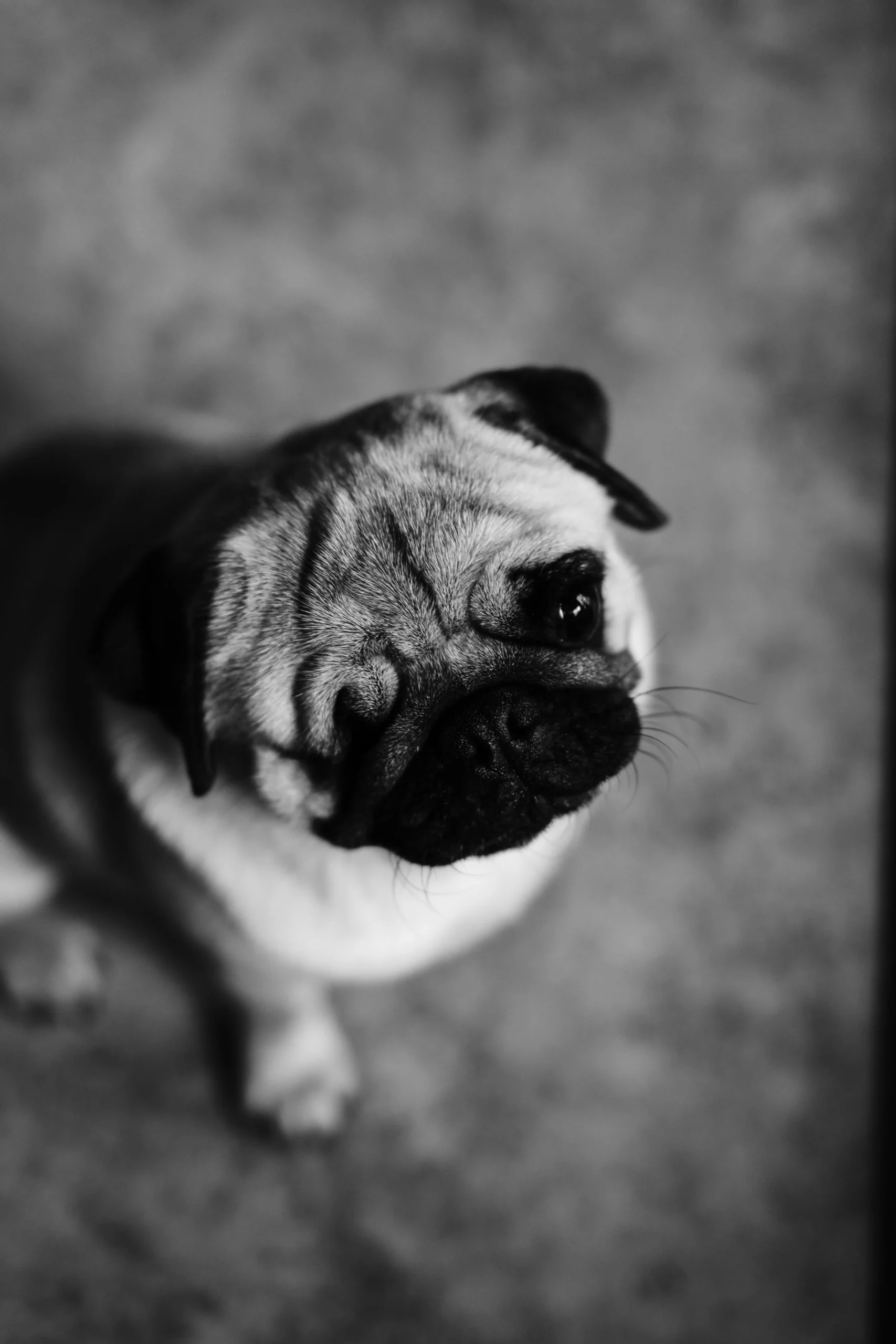History
The history of Pug dogs is a fascinating journey that takes us back to ancient China. These charming little dogs, known for their distinctive wrinkled faces and curled tails, have a lineage that dates back over 2,000 years. Pugs were bred as companion dogs for Chinese emperors, and they were highly cherished for their affectionate nature and endearing appearance.

Pugs were exported to Europe in the 16th century and quickly gained popularity among European royalty, particularly in the Netherlands and England. They were often seen in the company of monarchs and aristocrats, earning the nickname “the dog of the aristocracy.”
During the 18th century, Pugs became a symbol of the House of Orange in the Netherlands. The breed’s popularity continued to grow throughout the 19th century, with Pugs appearing in various works of art and literature. They were beloved pets and even served as guards for the royal family.
In the 19th century, Pugs made their way to the United States, where they gained a devoted following. The American Kennel Club officially recognized the Pug as a breed in 1885
Today, Pugs are cherished worldwide as companion animals. They have a rich history steeped in nobility and have transitioned from royal courts to loving homes, where they continue to capture the hearts of many.
In the United States, pugs were officially recognized by the American Kennel Club (AKC) in 1885. Throughout history, pugs have been treasured as companion animals, and their distinctive appearance and charming personalities continue to capture hearts around the world.
Pug Dogs Size
Pug dogs, often referred to simply as “Pugs,” are a small-sized breed known for their distinctive appearance and charming personality. In terms of size, Pugs typically fall into the category of small to medium-sized dogs, making them a popular choice for families and apartment living due to their manageable size.

- Height: On average, adult Pug dogs stand about 10 to 13 inches (25 to 33 centimeters) tall at the shoulder. This measurement is taken from the ground to the highest point of their shoulder blades. While individual Pugs can vary slightly in height, they generally remain within this range.
- Weight: Pugs are stocky and muscular little dogs, and their weight can vary based on factors such as genetics, diet, and exercise. Adult Pugs typically weigh between 14 to 18 pounds (6.4 to 8.2 kilograms), with males tending to be slightly heavier than females. It’s essential to monitor their weight to prevent obesity, a common issue in the breed due to their love of food.
- Build: Pugs have a compact and well-proportioned build. They have a sturdy, square-shaped body with a deep chest and a short, straight back. Their legs are relatively short but strong, giving them a characteristic waddling gait. Their tail is tightly curled over their back, and their distinctive wrinkled face is one of their most recognizable features.
- Size Variations: While most Pugs fit within the average height and weight ranges mentioned, there can be some individual variation. Some Pugs may be slightly smaller or larger, but extreme variations should be monitored by a veterinarian to ensure they are within a healthy range.
Overall, the small size and unique appearance of Pug dogs contribute to their widespread popularity as companion animals. Their manageable size makes them well-suited for indoor living, and their affectionate nature makes them cherished members of many households around the world. However, it’s important to provide them with proper care, including regular exercise and a balanced diet, to maintain their health and ideal size.
Nutrition and Diets
Proper nutrition is essential for the health and well-being of Pug dogs. These charming and affectionate little canines have specific dietary requirements that should be met to ensure they lead healthy and happy lives. Here, we’ll explore the key aspects of nutrition and diets for Pug dogs.
1. Balanced Diet:

A balanced diet is the foundation of a Pug’s health. Like all dog breeds, Pugs require a combination of macronutrients (proteins, fats, and carbohydrates) and micronutrients (vitamins and minerals) to thrive. A high-quality commercial dog food formulated for small breeds is often recommended for Pugs. These foods are designed to meet their nutritional needs, taking into account their size, age, and activity level.
2. Protein:
Protein is essential for Pug dogs as it supports muscle development, immune function, and overall health. Look for dog foods that list a high-quality source of animal protein, such as chicken, turkey, or fish, as the primary ingredient. The protein content in their diet should typically be around 20-25% of their daily caloric intake.
3. Fat:
Fat is an energy source for dogs and is important for maintaining healthy skin and a shiny coat. However, Pugs can be prone to obesity, so it’s crucial to monitor their fat intake. Look for dog foods with a moderate fat content (around 10-15%). Omega-3 and Omega-6 fatty acids, often found in fish oil and flaxseed, are beneficial for skin and coat health.
4. Carbohydrates:
Carbohydrates provide energy and fiber in a dog’s diet. While Pugs don’t have specific carbohydrate requirements, complex carbohydrates like brown rice, sweet potatoes, and oats can be included in their diet to provide sustained energy and aid in digestion.
5. Fiber:
Fiber is essential for maintaining a healthy digestive system. Adequate fiber content helps prevent constipation and aids in regular bowel movements. Most commercial dog foods for Pugs contain a suitable amount of fiber. If needed, additional fiber sources like canned pumpkin or green beans can be added to their meals.
6. Vitamins and Minerals:
Pug dogs, like all dogs, require essential vitamins and minerals for various bodily functions. A well-balanced commercial dog food should contain these nutrients in the right proportions. However, it’s essential not to over-supplement, as excessive vitamins and minerals can be harmful.
7. Special Dietary Considerations:
Pug dogs may have specific dietary considerations based on their age, activity level, and any underlying health conditions. Puppies, for instance, require more protein and calories for growth. Senior Pugs may benefit from a lower-calorie, senior-specific diet. If your Pug has allergies or sensitivities, you may need to choose a hypoallergenic or limited-ingredient dog food.
8. Feeding Schedule:
Establishing a regular feeding schedule is crucial for Pugs. Most adult Pugs are fed twice a day, while puppies may require three meals a day. Avoid free-feeding, as Pugs are prone to overeating, which can lead to obesity. Measuring their food portions and following the recommended feeding guidelines on the dog food packaging can help maintain a healthy weight.

9. Fresh Water:
In addition to a balanced diet, access to clean and fresh water is vital for Pug dogs. Ensure that your Pug always has access to clean water, especially during hot weather or after physical activity.
10. Special Dietary Restrictions:
Some Pugs may have specific dietary restrictions or allergies. Pay attention to any signs of food allergies or sensitivities, such as skin irritations or gastrointestinal issues, and consult with your veterinarian if you suspect a problem. In such cases, your vet may recommend an elimination diet or a hypoallergenic dog food.
11. Avoid Harmful Foods:
Pug owners should be aware of foods that are toxic to dogs and should be strictly avoided. These include chocolate, grapes, raisins, onions, garlic, and foods containing xylitol. These substances can be extremely harmful and even life-threatening to dogs.
12. Weight Management:
Pugs are prone to obesity, which can lead to a range of health issues, including joint problems and respiratory difficulties. To maintain a healthy weight, monitor your Pug’s food intake, avoid excessive treats, and provide regular exercise.
Training and Intelligence
Pug dogs are charming and affectionate companions known for their distinctive appearance, characterized by a wrinkled face, curled tail, and expressive eyes. While they may not be the top contenders in canine intelligence, pugs possess a unique blend of qualities that make them both trainable and endearing.
Training Pug Dogs:
Training any dog, including pugs, is a process that requires patience, consistency, and positive reinforcement. Pug puppies are generally eager to please and can be receptive to training from a young age. Here are some key aspects of training pug dogs:

- Socialization: Early socialization is crucial for pug puppies. Introduce them to various people, animals, and environments to help them become well-adjusted and confident adults.
- Basic Commands: Start with basic commands like “sit,” “stay,” “come,” and “down.” Pugs can grasp these commands, but they may need shorter training sessions due to their short attention spans.
- Positive Reinforcement: Pugs respond well to positive reinforcement, such as treats, praise, and toys. Use rewards to motivate and reinforce desired behaviors.
- Consistency: Be consistent in your commands and expectations. Pugs can become confused if there are mixed signals or inconsistent training methods.
- Patience: Pugs may take a bit longer to grasp commands compared to some other breeds, so patience is key. Avoid punishment-based training, as it can lead to fear and anxiety.
- House Training: Potty training is a significant aspect of training pug puppies. Be diligent in taking them outside at regular intervals and rewarding them when they eliminate outdoors.
- Leash Training: Pugs can be prone to pulling on the leash due to their curious and energetic nature. Use positive reinforcement and proper leash-walking techniques to teach them to walk politely on a leash.
Intelligence of Pug Dogs:
When discussing the intelligence of pug dogs, it’s essential to recognize that canine intelligence can be multifaceted. Pugs may not excel in tasks that require problem-solving or complex obedience, but they possess their unique form of intelligence:

- Adaptability: Pugs are adaptable dogs that can thrive in various living situations, from apartments to houses with yards. They can adjust to different family dynamics and are known for their ability to bond closely with their human companions.
- Emotional Intelligence: Pugs are incredibly emotionally attuned dogs. They can read human emotions and respond with empathy. They are often referred to as “velcro dogs” because they enjoy being close to their owners and providing comfort when needed.
- Sensory Perception: Pugs have well-developed senses, particularly their sense of smell. They can be surprisingly sensitive to changes in their environment and can alert their owners to potential dangers or intruders.
- Comedic Instincts: Pugs are renowned for their playful and sometimes goofy behavior. Their ability to make people laugh with their comical expressions and antics showcases their unique intelligence in brightening their owners’ lives.
- Communication: Pugs are excellent communicators, often using various vocalizations and body language to convey their needs and emotions. They can be quite expressive and vocal when excited, happy, or seeking attention.
- Attachment: Pugs form deep attachments to their human family members. This strong bond is a testament to their emotional intelligence and their desire to be a part of the family unit.
- Problem Solving: While pugs may not excel in complex problem-solving tasks, they can still learn and adapt to various situations with time and consistent training.
Health and Lifespan
Pug dogs are generally robust and healthy, but like all breeds, they are susceptible to specific health issues that owners should be aware of to ensure their pets lead long and comfortable lives.
One of the most common health concerns for Pugs is their tendency to become overweight or obese. Their love for food and relatively low activity levels can contribute to weight gain, which can exacerbate other health issues like joint problems and respiratory difficulties. Maintaining a balanced diet, portion control, and regular exercise are essential to keep Pugs at a healthy weight.

Pugs have distinctive short noses and flat faces, a trait known as brachycephalic, which can lead to respiratory issues. They are prone to conditions like brachycephalic obstructive airway syndrome (BOAS), which can cause breathing difficulties, especially in hot and humid weather. Owners should be cautious when exercising their Pugs in extreme conditions and should provide plenty of water and shade.
Eye issues, including corneal ulcers and entropion (a condition where the eyelids roll inward), are relatively common in Pugs. Regular eye examinations by a veterinarian can help detect and address these problems early.
Joint problems such as hip dysplasia can affect Pugs, particularly as they age. Providing joint supplements and maintaining a healthy weight can help manage these issues.
Skin allergies are another concern for Pugs, and they may require a special diet or medication to alleviate symptoms.
Pugs are also prone to certain hereditary conditions, including the neurological disorder known as Pug dog encephalitis (PDE). While PDE is relatively rare, it can be devastating when it occurs.
Despite these potential health challenges, Pugs have a relatively long lifespan for a small breed. On average, they live between 12 to 15 years, but with proper care and attention to their specific needs, some Pugs have been known to reach even older ages.
Regular vet check-ups, a balanced diet, regular exercise, and a loving home environment can contribute to a happy and healthy life for Pug dogs.
Conclusion
In conclusion, Pug dogs are a charming and unique breed with a rich history that spans centuries. They have captured the hearts of people around the world with their endearing personalities and distinctive appearance.

Pugs are known for their small size, which makes them adaptable to various living situations, from apartments to houses with small yards. Their compact build and distinctive features, including their wrinkled faces and curled tails, make them instantly recognizable and incredibly charming.
Proper nutrition and diet are essential for the health of Pug dogs. Owners should be mindful of their calorie intake to prevent obesity, which is a common issue for the breed. High-quality food and portion control are crucial to maintaining a healthy weight.
Pugs are intelligent and trainable, though they may have a mischievous streak that adds to their charm. Positive reinforcement training methods work best with these social and affectionate dogs. Early socialization is essential to ensure they are well-adjusted around other animals and people.
In terms of health, Pugs are generally healthy dogs, but they are prone to specific issues, including obesity, respiratory problems, eye conditions, and joint issues. Regular vet check-ups and a keen eye for any potential health concerns are vital for their well-being.
Despite their health considerations, Pugs have a relatively long lifespan for a small breed, typically living between 12 to 15 years. With proper care, they can lead happy and fulfilling lives as beloved members of the family.



